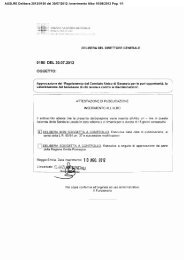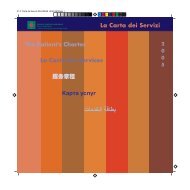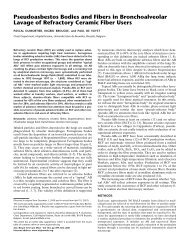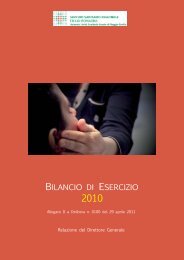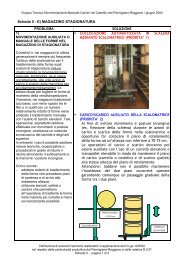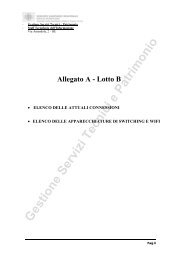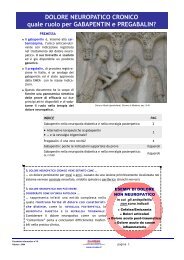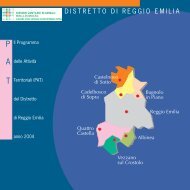Download PDF
Download PDF
Download PDF
- No tags were found...
You also want an ePaper? Increase the reach of your titles
YUMPU automatically turns print PDFs into web optimized ePapers that Google loves.
8 J.A. Leis et al.Wiggins and colleagues recruited an urban, high-risksample, a population that may have required more intensiveintervention efforts than the sample recruited by Holden etal. (1989). Second, although prevention of PPD was onetarget of the Wiggins et al. intervention, it was not the solefocus of the intervention as it was in the other study. A thirdpotential reason for the lack of reduction in depressivesymptoms is that the protocol of Wiggins et al. involvedmonthly, rather than weekly, sessions of counseling.However, the results of these studies must also beconsidered in the context of some limitations. Holden etal. (1989) did not conduct intention-to-treat analyses orassess outcomes longitudinally and while Wiggins et al.(2005) did those two things, they did not use a manualizedintervention. Neither study took steps to monitor implementation.Cognitive behavioral therapy studiesThree studies assessed the use of home-based CBTinterventions for treatment of PPD (Appleby et al. 1997;Chabrol et al. 2002; Prendergast and Austin 2001). Allthree trials reported reductions in depression following theintervention, although only two found statistically significantbetween-group differences. The first study utilized afactorial design to investigate the use of CBT compared to apharmacological treatment. Appleby and colleagues (1997)randomized women who scored 10 or higher on the EPDS,12 or higher on the Revised Clinical Interview Schedule(Lewis et al. 1992), and met research diagnostic criteria formajor or minor depression to receive fluoxetine (Prozac) orplacebo in combination with either one 60 min session ofCBT or one 60 min session plus five biweekly 30 minsessions of CBT delivered by trained health visitors.Immediately post-intervention, women who received sixCBT sessions were less likely to meet criteria fordepression on the Revised Clinical Interview Scheduleand had lower scores on the Hamilton Depression RatingScale (HAM-D; Hamilton 1960), but not on the EPDS, thanwomen receiving one CBT session. Fluoxetine also provedeffective in lowering rates of depression and reducingdepressive symptoms but the combination of fluoxetine andCBT did not lead to additional improvement above theeffect of either intervention alone. This study excludedwomen with chronic or treatment resistant depression andreported a high attrition rate (30%), which should be kept inmind when interpreting its findings.Chabrol et al. (2002) reported that CBT was effective fortreatment of PPD. In this two-tier combined prevention/treatment trial, women with symptoms of depression duringthe first 5 days postpartum were randomized to routine careor a one-hour individual prevention session delivered in anobstetric clinic by a masters-level therapist. Women in bothgroups completed the EPDS 4 to 6 weeks postpartum;thoseintheinterventiongroupwhoscored11orhigherand met DSM-IV (American Psychiatric Association1994) criteria for major depressive episode were askedto participate in a program of between five and eighthome visits, those in the control group who met the sameinclusion criteria continued to receive routine care.Participants in the intervention group received an averageof six weekly, one-hour sessions of a cognitive behavioraltreatment program delivered by Master’s Degreelevel therapists in their homes. Significant differences wereseen between women randomized to the home-basedtreatment and women randomized to routine care immediatelypost-intervention on the EPDS and Beck DepressionInventory (BDI; Beck et al. 1988), and there was a 60%difference in recovery rate favoring the intervention group(66.6% in the intervention group versus 6.6% in thecontrol group) on the HAM-D. Limitations of this studyinclude non-independent outcome assessment, the smallsample size, and lack of follow-up.A third trial evaluated a CBT treatment for PPDdelivered by nurses (Prendergast and Austin 2001). Womenscoring 12 or higher on the EPDS who met DSM-IVcriteria for major or minor depression were randomized toreceive six weekly home-based CBT sessions or six weeklyclinic visits that incorporated parenting advice and nonspecificemotional support also delivered by nurses.Intervention dosage differed between groups; all womenin the intervention group received all six sessions ofCBT whereas only 45% of women in the control groupattended all six sessions. While a reduction in symptomson the EPDS and Montgomery-Asberg DepressionRating Scale (MADRS; Montgomery and Asberg 1979)was seen for both groups immediately post-intervention,no significant differences were found between the groups,suggesting that the support provided during in-clinicvisits was as effective as CBT in reducing symptoms ofdepression. Six months post-intervention, there was atrend toward CBT being more effective with scores on theEPDS continuing to decrease for women in the CBTcondition but not for women in the control condition, butthere was no statistically significant difference in scoresbetween the groups. This was a very small trial with only17 participants in the intervention group and 20 participantsin the control group, however, and may not havehad enough power to detect differences of small tomoderate magnitude between the groups. In addition,women in both groups were taking antidepressants orherbal remedies for depression and this was not taken intoaccount in the analyses. Finally, the authors did notconduct intention-to-treat analyses.Taken together, these three studies suggest that homebasedCBT interventions are effective in reducing symp-



